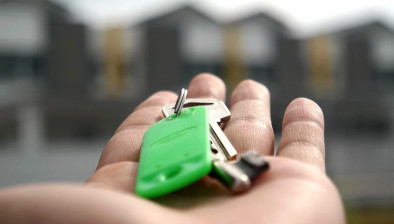ESPC: Government’s EPC ratings plan ‘practically impossible’

Paul Hilton
The Scottish Government’s plans for new Environmental Performance Certificates (EPCs), whilst well intentioned, may in some types of property be impossible to achieve, property marketing company ESPC has warned.
In the current system of EPCs, the most prominent metric is the Energy Efficiency Rating for the dwelling. The EER provides a banded rating from A (the most efficient) to G (the least efficient) and a 1-100 rating based on the cost to run the dwelling (normalised to the floor area).
The Scottish Government intends to change that, creating three new headline metrics for EPCs:
- Fabric Rating - The government’s developed two possible definitions for the Fabric rating and is using the answers given in their recent consultation to help decide between them. Either the energy required to be supplied by the heating system to achieve standardised internal conditions, including heating, cooling, and domestic hot water heat demand. Or the energy required to be supplied by the heating system to achieve standardised internal conditions, including heating and cooling demand but excluding domestic hot water heat demand.
- Cost Rating - This is simply a new name for the current metric, the Energy Efficiency Rating. It’s intended to allow potential buyers or tenants to make a standardised comparison of running costs between properties, plus to provide a mechanism for fuel poverty-focused schemes.
- Heating System Type - The government wants EPCs to provide information as to whether the home’s heating system produces zero direct emissions, as well as information about the efficiency of the system.
Following the proposed changes to EPCs, the government intends to bring in a wider Heat in Buildings Bill, which would require all homes to meet a minimum fabric energy efficiency standard equivalent to EPC C by 2033 and to prohibit the use of direct emissions heating systems (like gas boilers) in domestic and non-domestic buildings by 2045.
For context, there are 2,610 properties currently for sale on espc.com. 1,192 (46%) currently have an EPC rating of “C” or better.
For many properties and householders achieving the “C” rating or better will be difficult for both logistical and financial reasons. ESPC would like the government to work with the industry on a number of issues:
- The possibility for exemptions from the ban on direct emissions heating systems for certain types of buildings, for example some tenement flats and some properties in conservation areas or in heritage sites.
- Greater financial support to help purchase and install heat pumps.
- Discussion of a wider suite of options to help move Edinburgh and Scotland’s varied housing stock closer to net zero.
Paul Hilton, CEO of ESPC, said: “We are in agreement with much of what the government is proposing.
“The new EPCs will make it easier for buyers to evaluate how much they’ll be likely to spend on heating the home they’re thinking of buying, and we agree that the move toward zero direct emissions heating systems will help reduce carbon emissions.
“However, we need to be more aware of the unintended consequences of the proposals. The installation of ground or air source heat pumps will be expensive and logistically difficult in many properties. In some tenement flats, for instance, it will be practically impossible.
To take Edinburgh as an example, around two-thirds of the city’s housing stock is flats, and many of those will be in one of the city’s two UNESCO World Heritage Sites, which in many cases will make it even harder for people to convert their heating systems.
“That, in turn, means that the C rating the Government wants all properties to reach will be unachievable in many cases, with potentially severe implications for people wishing to sell those homes.”








